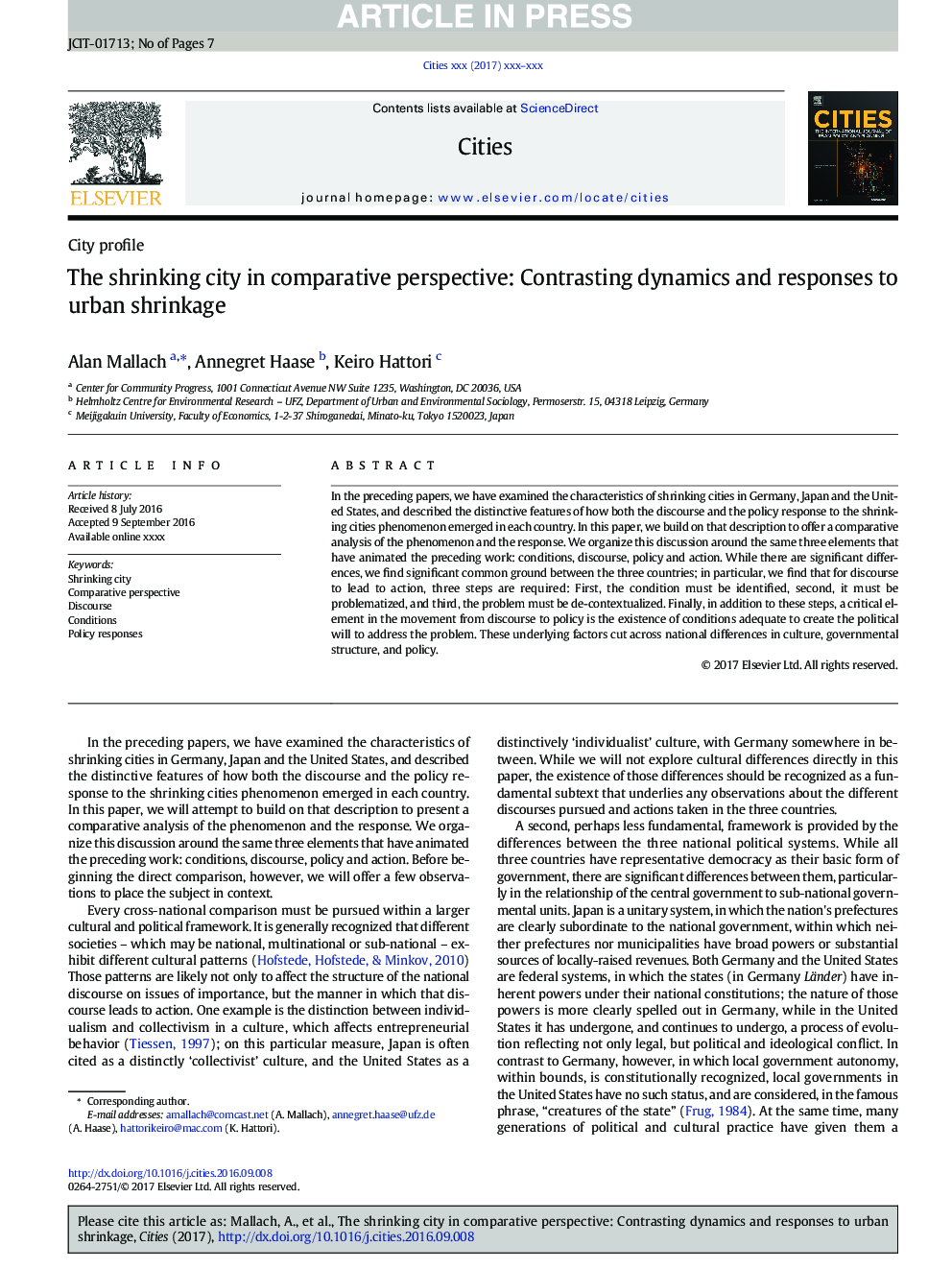| کد مقاله | کد نشریه | سال انتشار | مقاله انگلیسی | نسخه تمام متن |
|---|---|---|---|---|
| 5108031 | 1482327 | 2017 | 7 صفحه PDF | دانلود رایگان |
عنوان انگلیسی مقاله ISI
The shrinking city in comparative perspective: Contrasting dynamics and responses to urban shrinkage
ترجمه فارسی عنوان
شهر کوچک در منظر تطبیقی: پویایی سازگار و پاسخ به انقباض شهری
دانلود مقاله + سفارش ترجمه
دانلود مقاله ISI انگلیسی
رایگان برای ایرانیان
کلمات کلیدی
کاهش شهر، دیدگاه مقایسه ای، گفتمان شرایط پاسخ های سیاسی،
ترجمه چکیده
در مقالات قبلی، ما ویژگی های شهرهای کوچک آلمان، ژاپن و ایالات متحده را مورد بررسی قرار داده ایم و ویژگی های مشخصی از نحوه گفت و گو و پاسخ سیاست به پدیده شهرها را در هر کشوری نشان دادیم. در این مقاله، ما بر آن توصیف می کنیم تا تحلیل تطبیقی پدیده و پاسخ را ارائه دهیم. ما این بحث را در مورد همان سه عنصر که کار پیشین را متحول کرده اند سازماندهی می کنیم: شرایط، گفتمان، سیاست و عمل. در حالی که تفاوت های قابل توجهی وجود دارد، ما می بینیم که بین سه کشور، منطقه قابل ملاحظه ای وجود دارد؛ به طور خاص، ما دریافتیم که برای گفتمان برای هدایت به عمل، سه مرحله لازم است: اول، شرایط باید شناسایی شود، دوم، آن باید مشکل ساز شود، و سوم، مشکل باید از نظر محور متمرکز شود. در نهایت، علاوه بر این مراحل، یک عنصر مهم در جنبش از گفتمان به سیاست، وجود شرایطی است که کافی برای ایجاد اراده سیاسی برای حل این مشکل است. این عوامل اساسی بر تفاوت های ملی در فرهنگ، ساختار دولتی و سیاست متمرکز است.
موضوعات مرتبط
علوم انسانی و اجتماعی
مدیریت، کسب و کار و حسابداری
گردشگری، اوقات فراغت و مدیریت هتلداری
چکیده انگلیسی
In the preceding papers, we have examined the characteristics of shrinking cities in Germany, Japan and the United States, and described the distinctive features of how both the discourse and the policy response to the shrinking cities phenomenon emerged in each country. In this paper, we build on that description to offer a comparative analysis of the phenomenon and the response. We organize this discussion around the same three elements that have animated the preceding work: conditions, discourse, policy and action. While there are significant differences, we find significant common ground between the three countries; in particular, we find that for discourse to lead to action, three steps are required: First, the condition must be identified, second, it must be problematized, and third, the problem must be de-contextualized. Finally, in addition to these steps, a critical element in the movement from discourse to policy is the existence of conditions adequate to create the political will to address the problem. These underlying factors cut across national differences in culture, governmental structure, and policy.
ناشر
Database: Elsevier - ScienceDirect (ساینس دایرکت)
Journal: Cities - Volume 69, September 2017, Pages 102-108
Journal: Cities - Volume 69, September 2017, Pages 102-108
نویسندگان
Alan Mallach, Annegret Haase, Keiro Hattori,
